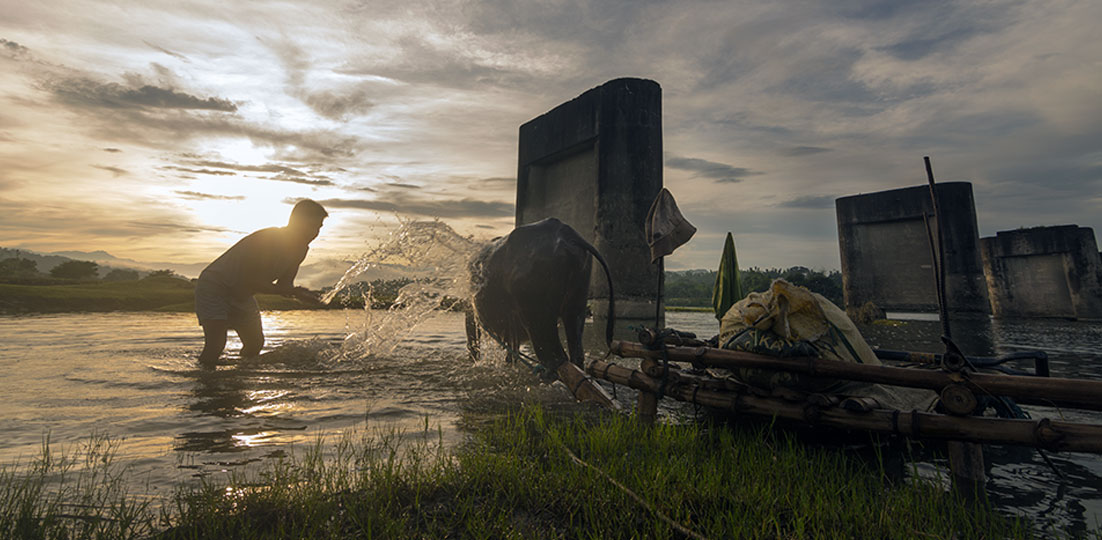Tourism and agriculture are the major industries in Bauang. In the early ‘70s, Bauang was the beach capital of the Philippines. Resort hotels and restaurants lined the shores of Baccuit to Pagdalagan thanks to the influx of tourists. Due to climate change, the shorelines of the said barangays gradually submerged in seawater.
Realizing the effects of the degradation of shorelines on the economy, programs to regain the dwindling tourism industry was thus launched by the municipal government through the “Rediscover Bauang” project. This coastal town focused instead on the other half of its entire shoreline which at some point had increased considerably. Bauang has somehow regained its popularity with the development of the beach and the intensified agriculture programs. Eco-tourism has become not just a fad but a thing of much interest. Farmers in the south opened their vineyards to the public for grape-picking activities. Suddenly, Bauang is now known as the fruit basket of the north as well.
True to the battlecry of the town which is “Sulong Bauang”, its economy improved and Bauang is one of the most progressive towns in the province. It is a first class municipality. The total land area is 7,160 hectares which is composed of coastal, plain, and mountainous areas. Of the 72,391 population as of year 2010, this town is predominantly Catholic. The town has two annual major events; the Kalgaw Festival for summer which usually runs from April 26-28 and the Baggak Festival which runs from December 16 and culminates on January 5 the following year to coincide with the celebration of the foundation anniversary.
Bauang was founded on January 5, 1586. Bauang may have been derived from “bua” which means beetle nut; “bawang” which means garlic, these two being in abundance then. The version that is interesting though is the word “buang” which means “river split into two” before flowing into the sea. As it is, the Bauang river is split into two by a delta. In one part of the delta is a vast mangrove plantation that is being developed by the municipal government.
Bauang is located in the western part of the second district of La Union. The western portion of Bauang stretches along the shorelines of west Philippine sea. It is bounded on the north by the City of San Fernando; on the east by Naguilian town; on the south by town of Caba. The municipality is approximately 10 kilometers south of the City of San Fernando, 50 kilometers west of Baguio City, and 250 kilometers north of Metro Manila.
Bauang is politically and administratively subdivided into 39 barangays; namely
- Acao
- Baccuit Norte
- Baccuit Sur
- Bagbag
- Ballay
- Bawanta
- Boy-utan
- Bucayab
- Cabalayangan
- Cabisilan
- Calumbaya
- Carmay
- Casilagan Central East
- Central West
- Dili
- Disso-or
- Guerrero
- Nagrebcan
- Pagdalagan Sur
- Palintucang
- Palugsi-Limmansangan
- Parian Oeste
- Parian Este
- Paringao
- Payocpoc Norte Este Payocpoc Sur
- Pilar
- Pudoc
- Pottot
- Pugo
- Quinavite
- Lower San Agustin
- Santa Monica
- Santiago
- Taberna
- Upper San Agustin
- Urayong
PLACES AND THINGS OF INTEREST:
- Bauang Beach
- San Pedro Bell
- Mount Kabugbugan
- Sangbay Falls
- Bakawan/Mangrove Area
- Vineyards
- Fruitpicking (Durian, Lanzones, Rambutan, Grapes, Dragonfruit, Guapple)





